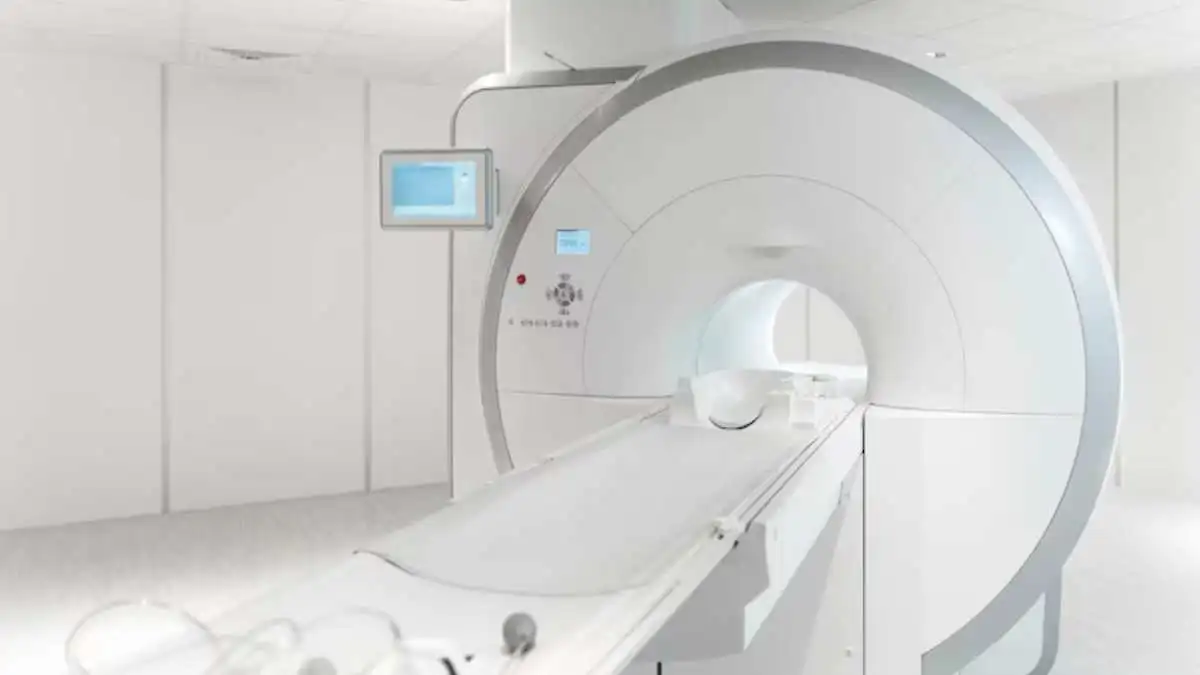HEALTH AND FITNESS
What Is an MRI and How Does It Work?

MRI stands for Magnetic Resonance Imaging, a form of diagnostic imaging that utilizes radio waves and powerful magnets to make precise pictures of the inside of your body. In contrast to CT scans or X-rays, MRI does not use ionizing radiation, making it safer for repeated imaging.
During an MRI, you’ll lie on a movable table that slides into a cylindrical machine. The scanner takes detailed images by detecting how your body’s atoms respond to the magnetic field. These images help doctors diagnose issues that may not show up well on other types of scans.
Why Would a Doctor Recommend an MRI?
Doctors often recommend an MRI when:
- X-rays or ultrasounds don’t provide enough detail
- They have problems in soft tissues like muscles, ligaments, or organs
- There is a need to diagnose neurological or spinal disorders
- There are recurring symptoms without a definite cause
An MRI allows early diagnosis and accurate treatment planning, and that is why it is necessary to identify a good MRI in your area for immediate treatment.
Top Health Conditions Diagnosed with MRI
1. Brain and Neurological Disorders
MRIs are commonly utilized to diagnose brain and nervous system disease, including:
- Brain Tumors
- Multiple Sclerosis (MS)
- Stroke Damage
- Aneurysms
- Epilepsy
- Traumatic Brain Injuries
An MRI will show detailed pictures of the brain structure, tissue abnormalities, blood vessels, or nerves.
2. Spinal Cord Disorders
If you experience chronic back pain, numbness, or weakness, your doctor might send you for a spinal MRI. It can identify:
- Herniated discs
- Spinal stenosis
- Tumors or cysts
- Pinched nerves
- Degenerative disc disease
An MRI of the spine creates detailed pictures of the discs, vertebrae, spinal cord, and surrounding tissues and is therefore an effective tool for orthopaedic surgeons and neurologists.
3. Musculoskeletal and Joint Disorders
MRI scans are often utilized in orthopaedics and sports medicine to assess joint and soft tissue injuries, and include:
- Torn ligaments (e.g., ACL injury)
- Muscle tear
- Tendonitis
- Meniscus injuries
- Arthritis
- Damage to cartilage
Because MRI can create such detailed images of soft tissue, it’s ideal for detecting injuries that an X-ray won’t detect.
4. Heart and Vessel Disease
Cardiac MRI is a new advance in the diagnosis of heart disease, taking accurate measurements of:
- Heart shape and function
- Congenital heart abnormalities
- Blood flow diseases
- Damaged heart tissue after a heart attack
- Inflammation in the heart or surrounding tissue
MRIs can also identify vascular diseases like aneurysms, blood clots, and blocked arteries.
5. Pelvic and Abdominal Disorders
MRI can generate high-resolution images of pelvic anatomy and abdominal organs, which are useful in identifying:
- Liver or kidney disease
- Uterine fibroids
- Ovarian cysts
- Prostate disease
- Inflammatory bowel disease (IBD)
Tumors or cancer of the abdominal organs
If you must find an MRI center near you to address problems in the abdominal or pelvic regions, look for centers that have a specialty in MRI protocols for abdominal or pelvic procedures.
6. Cancer Detection and Monitoring
MRI is critical to the detection and monitoring of most cancers, such as:
- Brain tumors
- Breast cancer (especially for women with dense breasts)
- Cancer of the liver, kidney, and pancreas
- Prostate and cervical cancer
- Bone cancer
MRI may be employed to assess the dimensions and spread of tumors, guide biopsies, and assess the outcome of treatment.
What Happens Following the MRI
Your scan will be interpreted by a radiologist, who will report a detailed report to your doctor. Your doctor may write for further tests, therapy, or a specialist referral based on the outcome.
If you’re searching for a reputable MRI near you, choose a facility with experienced radiologists and up-to-date technology to ensure accurate results and fast turnaround times.
Tips Before Your MRI Appointment
Here are a few things to do to prepare for your MRI:
- Wear loose, metal-free clothing
- Tell the technician about any implants, pacemakers, or metal fragments
- Plan to arrive early to fill out any required paperwork
- You may be told to fast, especially for abdominal MRIs
If you are claustrophobic, discuss open MRI possibilities or light sedation with your doctor
Last Thoughts
An MRI is not just a scan—it’s an amazing diagnostic tool that gives doctors a good idea of what’s happening inside your body. When you experience chronic pain, unexplained symptoms, or are monitoring a chronic condition, reaching a trustworthy MRI nearby ensures prompt diagnosis and peace of mind, worry-free.
If your doctor has referred you for an MRI, don’t wait. Early detection is the key to better results, and with the availability of existing, convenient facilities, you can get the scan in comfort.
Need an MRI Near You?
Look for accredited diagnostic imaging facilities in your area with available appointments, skilled reporting, and one-on-one care. Your health is invaluable.
-

 BIOGRAPHY7 months ago
BIOGRAPHY7 months agoBehind the Scenes with Sandra Orlow: An Exclusive Interview
-

 HOME1 year ago
HOME1 year agoDiscovering Insights: A Deep Dive into the //vital-mag.net blog
-

 HOME1 year ago
HOME1 year agoSifangds in Action: Real-Life Applications and Success Stories
-

 BIOGRAPHY1 year ago
BIOGRAPHY1 year agoThe Woman Behind the Comedian: Meet Andrew Santino Wife




























